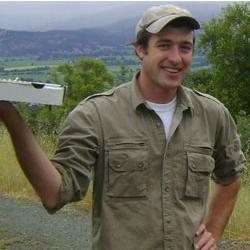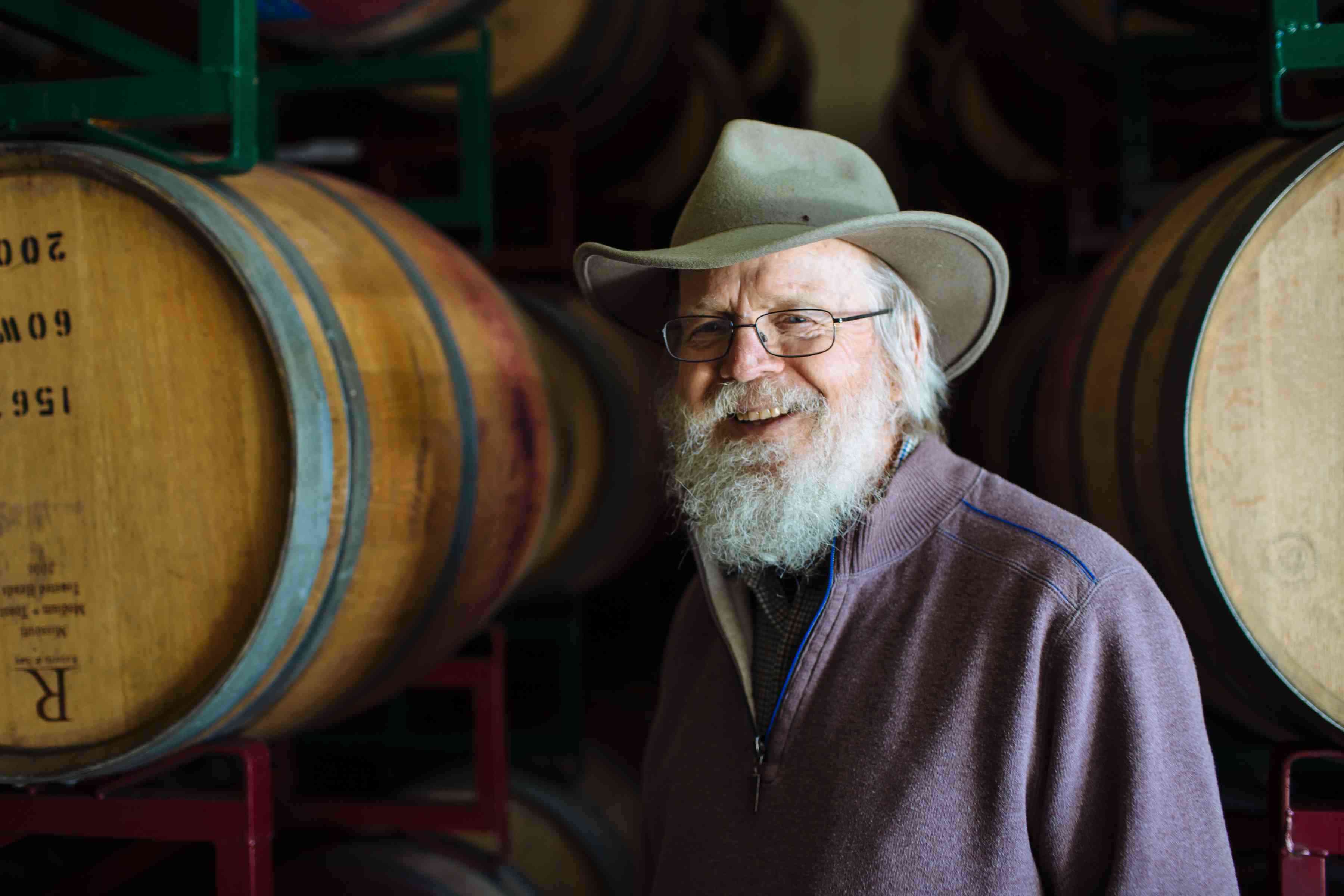Overall traffic increased a lot though the data is a bit imprecise. (Blogger's analytics doesn't let you specify a date range to measure, unlike the more powerful Google Analytics). But it's clear 2018 was the most popular year by far.
Thank you, readers!

That Mancozeb Story
The peak traffic in August was a record breaking 17,000 plus page views for that month alone (although I have never written anything for the sake of increasing page views).
A prominent certified sustainable vineyard owner was using Mancozeb, a dangerous chemical not permitted under Fish Friendly Farming certification, the sustainability program he was certified under. (Therefore he was not in compliance with the requirements for Sonoma's Certified Sonoma Sustainable program).
That sparked a controversy, a response from the Sonoma Certified Sustainable program spokesperson and changes in the vineyard company's behavior. And the story was the inspiration for the Hosemaster of Wine, who wrote a blog post on being sorta sustainable that reached an international audience.
The grower has now stopped using Mancozeb, so I have removed the post about this for now.
My hope is that other growers will think twice before using chemicals that are among the more toxic options.
Unfortunately, the grower's grapes from the Mancozeb period (and his family winery) continue to be sold as Sonoma County Sustainable; no censure has taken place.
This affects not only the vineyard owning family's wines, but all the wineries that buy those grapes.
Since the family has about 1,000 acres of grape vines and more than 50 wineries purchase grapes from them, the misrepresentation affects hundreds of wines that may display the Sonoma County Sustainable labels.
HOT TOPICS
• Pesticides
Roundup wins in court, glyphosate test results for wine published, pesticides' tastes detectable in French wine study
This blog is the only place I know of that provides coverage of pesticides and wine, so perhaps it's not surprising that this topic alone was the biggest share of page views.
It was also a very big year for stories about glyphosate in particular, and I was privileged to get a front row seat on some of the scientific proceedings related to these cases (which I wrote about in an article published on Civil Eats).
A big thank you to the world class scientists who testified for their research and for their voices.
• Wine Culture
The movie Somm, the new book The Sommelier's Atlas of Taste
Does organics need to get a bigger voice in projects like this? Yes.
What should happen next?
In my dreams, Somm 4 would replicate the French tasting research on the taste of pesticides in wine. Wouldn't that be fun?
And 60 Minutes would do an exposé on the use of pesticides in vineyards, just like their French equivalent - Cash Investigations - has.
• Biodynamics
Should Jancis Robinson bone up on BD? Where to learn more (conference schedule)
Demystifying the basics of required farming practices and the economics of Biodynamic wine grape growing should be high on everyone's to do list. It's not voodoo; it's your great grandparents' farming.
• Green Wine
Consumer insights from a pro, and the top organic growers in Sonoma
Younger consumers want greener wines, preferring organic and regenerative practices to "sustainable."
TOP TEN POSTS BY THE NUMBERS
Here were the hottest posts and topics of the year (with page view counts in bold).
PESTICIDES
1. A New Type of Wine Score - Glyphosate Levels | 3,439
Could consumers care about glyphosate in wine? Yes they could. The most popular blog post of the year was on this subject.
Moms Across America's second round of wine testing (in 2018; the first was in 2016) found 150X differences between conventionally grown wine and an organically grown brand and soon all of their FB audience (and its extended reach) knew.
(Postscript: When I wrote the blog post about the Moms' testing findings, the Wine Institute had bought an ad for the search results people might use to find out about the ad which I mentioned in the blog post. After that post was published, the Wine Institute removed its ad buy for the terms "Moms Across America glyphosate.").
Now the Moms group is actively promoting the first wine certified "Glyphosate Free" (although the cap is only 10 ppb, not 0, which could allow many organically grown wines to qualify if this labeling becomes popular with consumers).
PESTICIDES
2. Monsanto Roundup Trial - Closing Arguments - Slides + Photos | 2,830
Trial documents from the case of DeWayne Lee Johnson versus Monsanto showed vividly how exposure to glyphosate led to a fatal diagnosis of non Hodgkin lymphoma. By year's end, stock in Monsanto's new parent company, Bayer, was worth half as much as it was a year ago.
Public opinion about the herbicide's safety also shifted following the jury's decision to impose fines of $289 million in damages against Monsanto. Though the fines were reduced, the stock price has not bounced back, amounting to a loss of billions.
More than 8,000 additional cases are pending in U.S. courts.
PESTICIDES
3. French Wine Study Finds Wine Lovers Can Taste Pesticides in Wine | 1,498
Is something missing in WSET and MW exams? French pesticide researcher Gilles-Eric Seralini and chef Jerome Douzelet found that top tasters could write tasting notes describing the flavors of various commonly used wine grape pesticides, a topic not frequently studied but with potentially serious implications.
GREEN WINE
4. An Organic Business Model: Napa's Shining Star - Ted, Laddie and Chris Hall's Growing Organic Enterprise | 1,107
When the Halls bought the iconic Napa white wine (and celebrated Chardonnay maker) producer Stony Hill, it was the latest step in their path to building a multigenerational, organic-as-a-family-value winery and vertically integrated company.
WINE CULTURE
5. Somm 3: Yes You Must See This Movie | 835
Published less than a month ago, this story generated 800+ views. Somm 3 is fun - and elitist. And you should see it.
BIODYNAMICS
6. Jancis Robinson Sings Biodynamic Wine's Praises - But Is More Education Needed? | 835
After seeing yet another bonafide wine writer at the top of her game write a piece about Biodynamic wine and painting it with a little bit of the Harry Potter/Hogwarts brush, I decided enough was enough. It's time for all wine professionals to be better grounded in their education about Biodynamic's agronomic basis and why it matters - especially in the time of climate change. Time to put away the old tropes.
BIODYNAMICS
7. Biodynamic Association's 2018 Conference in Portland Will Feature Biodynamic Vintners and Wines | 621
Here was one place to learn more (in October) and get the information people need to write intelligently about Biodynamic wineries.
Of course, the best place was in May at the International Biodynamic Wine Conference in SF. See that web site for a list of speakers, topics and the Grand Tasting program guide with a list of wines and wineries. It's a great online resource.
WINE CULTURE
8. Raj Parr and Jordan Mackay's New Wine Book: The Classic European Wines You - and Millenials Raised on Natural Wines - Need to Know | 598
When the meme / pendulum swings too far toward the sulfite debate (i.e. natural wines), a top somm and food writer champion the great estates of Europe and traditional fine wines, which come from terroir driven vignerons.
GREEN WINE
9. Green Wine Insights: An Interview with Eco Wine Survey Author and Sonoma State Wine Business Professor Liz Thach, MW | 573
A wine business professor's students poll finds preferences for organic and Biodynamic wines rate higher than for sustainable wines. And respondents say they're willing to pay more for these wines.
GREEN WINE
10. Top 10 Organic Vineyards by Size - Sonoma | 500
Few people know who's who in organic wine grape growing in Sonoma (or Napa) so I compiled this basic list. (I published a Napa list in 2017.)
Wishing you a happy and healthy wine loving year in 2019!


















